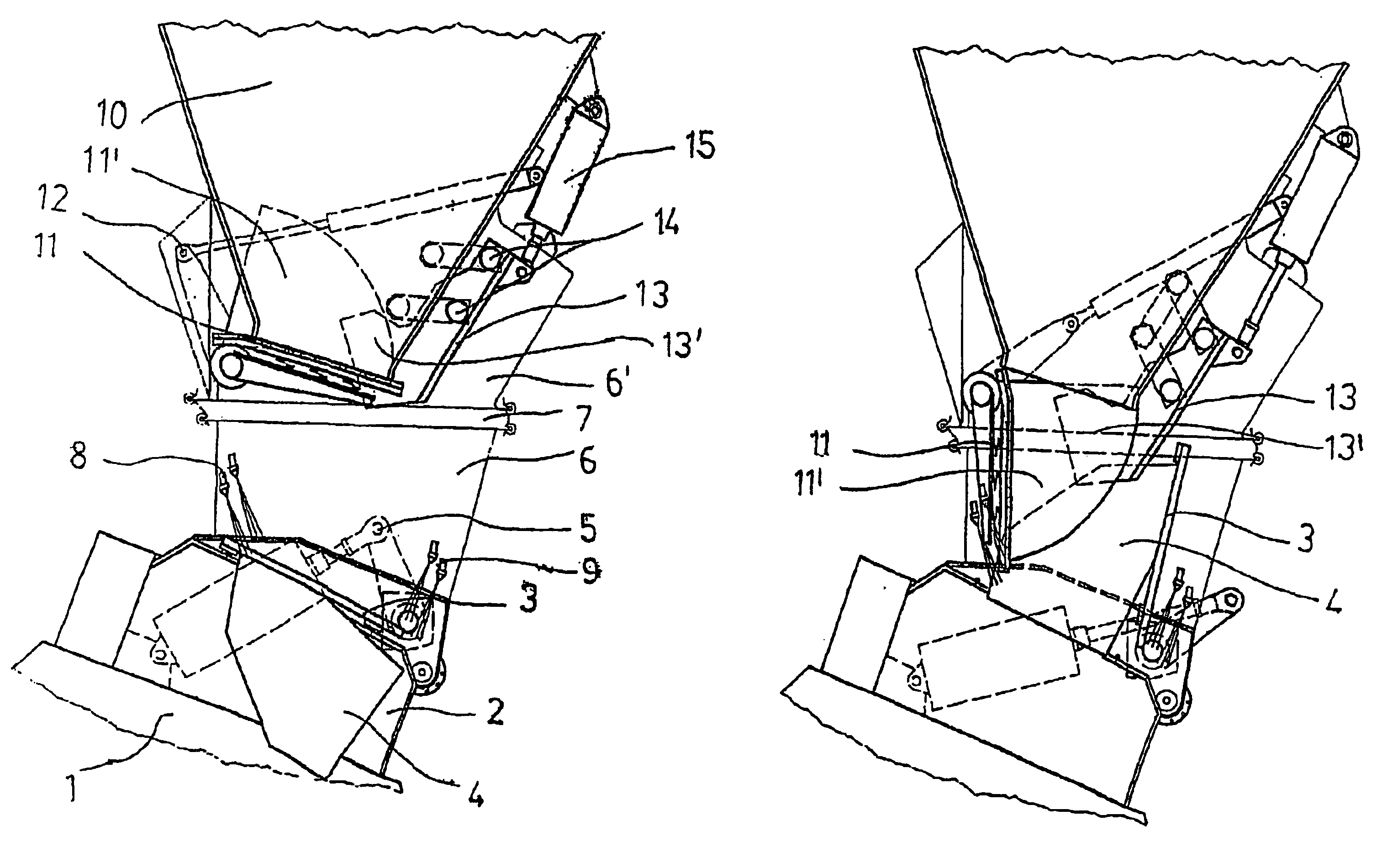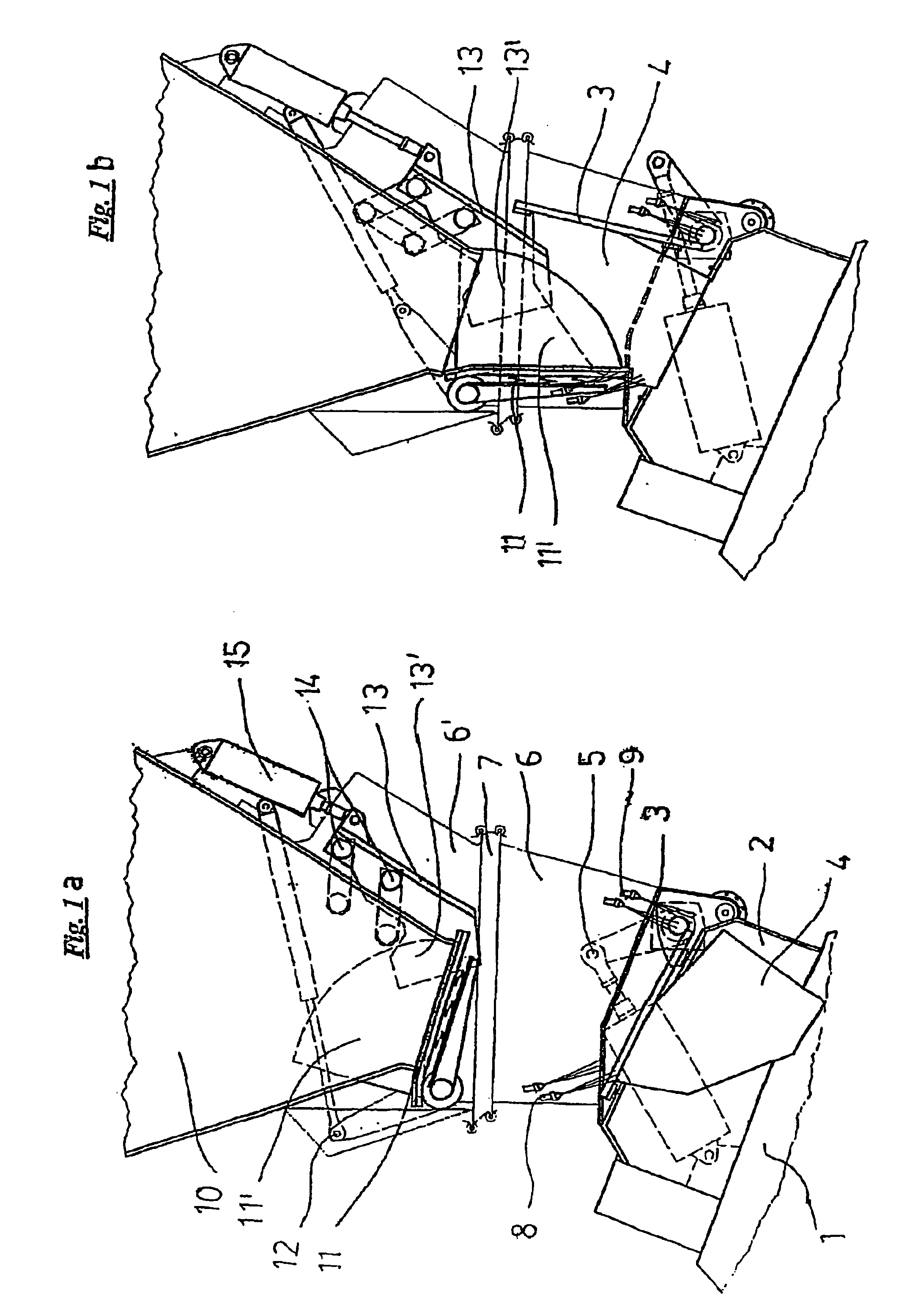Method and device for the preparation of foundry sand
a technology for foundry sand and mould sand, which is applied in the direction of cement mixing apparatus, mixing methods, mixing methods, etc., can solve the problems of inability to error-free and above all economically optimized operation, devices and/or peripheral equipment used and their method of operation, and inability to use error-free and above all economical optimization. , to achieve the effect of increasing the charging rate, saving resources and high quality
- Summary
- Abstract
- Description
- Claims
- Application Information
AI Technical Summary
Benefits of technology
Problems solved by technology
Method used
Image
Examples
Embodiment Construction
FIGS. 1a) and 1b) show the outlet region of a solids weighing device 10 and the inlet region of the mixer 1. The solids weighing device 10 is used for determining the quantity of recycled sand to be supplied or optionally also of other mixture components. In FIG. 1a), both the mixer 1 and the solids weighing device 10 are closed, while FIG. 1b) shows the conveyance position between the mixer 1 and the solids weighing device 10.
An inlet connecting piece 2 is arranged at the upper side of the mixer 1. This inlet connecting piece 2 is sealed in a vacuum-tight manner through the container cover 3 with the assistance of the lever arm 5, which is driven, for example, by a hydraulic cylinder. It can be seen that the container cover 3 provides one lateral cheek 4 at both of its lateral outer edges.
The solids weighing device 10 also has an outlet flap 11, which provides lateral cheeks 11′ at both of its lateral outer edges. This flap can be opened or closed via the lever 12.
Moreover, this ve...
PUM
| Property | Measurement | Unit |
|---|---|---|
| area | aaaaa | aaaaa |
| volume flow rate | aaaaa | aaaaa |
| area | aaaaa | aaaaa |
Abstract
Description
Claims
Application Information
 Login to View More
Login to View More - R&D
- Intellectual Property
- Life Sciences
- Materials
- Tech Scout
- Unparalleled Data Quality
- Higher Quality Content
- 60% Fewer Hallucinations
Browse by: Latest US Patents, China's latest patents, Technical Efficacy Thesaurus, Application Domain, Technology Topic, Popular Technical Reports.
© 2025 PatSnap. All rights reserved.Legal|Privacy policy|Modern Slavery Act Transparency Statement|Sitemap|About US| Contact US: help@patsnap.com



